Introduction to Business of Fashion
Fashion isn't just about wearing nice clothes. Behind every outfit you see in shops or online, there is a whole business making it happen. This is called the
Business of Fashion. It's where design, production, marketing, selling and money all come together. A simple T-
shirt goes through many steps before it reaches you - someone has to plan it, make it, price it, promote it and sell it.
This side of fashion is important for everyone to understand. For students, it opens doors to
jobs in design, branding or retail. For regular readers, it helps you see how fashion works as a business, not just style. So if you have ever thought fashion was only about dressing up, think again.
There's a smart, strong system behind it - and that's what we are about to explore.
Product Life-Cycle in Fashion
Every fashion product follows a cycle. From its first launch to when people stop wearing it, this journey has five clear stages:
- Introduction: A new style is launched. It appears in fashion shows, designer collections or on celebrities. Only a few people wear it at this stage. Most are still unsure about it.
- Rise: The trend becomes popular. More people start noticing it. It appears in shops, on social media and in fashion magazines. Demand goes up and sales begin to grow.
- Peak: This is the highest point. Everyone is wearing it. Shops are full of it. It becomes the most common style for a short time.
- Decline: People slowly lose interest. Sales drop. New trends take over. Shops start offering discounts to clear old stock.
- Rejection: The trend is over. People stop wearing it. Shops remove it. It is seen as outdated.
Fast Fashion & Shorter Cycles
Earlier, fashion followed two main seasons -
Summer and
Winter. Now,
fast fashion brands release new styles every 6 to 8 weeks. This is done on purpose to keep people buying more. This idea is called
planned obsolescence. Brands create products that feel old quickly so customers buy the next new thing. As a result, the product life-cycle has become shorter than before.
Impact on Profit and Innovation
To make a profit, timing is key. If a brand brings out a trend at the right time, it sells well. If it's too late, it doesn't work. So fashion companies must plan carefully. This cycle also pushes brands to be creative and bring fresh ideas often. But it also adds pressure to move fast and stay ahead.
Consumer Adoption Curve - Who Buys Fashion First?
In fashion, not everyone buys new styles at the same time. Some people try new trends early. Others wait until the style becomes common. This pattern is called the consumer adoption curve. It has five groups.
- Innovators - They are the first to try new fashion. They don't wait to see what others think. Most of them work in fashion or love to try bold styles.
- Early Adopters - They follow soon after the innovators. They notice new trends early and start wearing them before most people. They often help trends become popular.
- Early Majority - They wait until a trend is proven. They want to be sure it looks good and is worth buying. They join when others are already wearing it.
- Late Majority - They take more time. They only buy when the trend is common. They often look for lower prices or offers before buying.
- Laggards - They are the last to follow a trend. Many don't follow trends at all. They prefer simple, classic clothes they already know.
Why Consumer Adoption matters in Fashion?
Fashion brands use this curve to plan their products. They launch new styles for innovators and early adopters. These groups help create buzz. Once the trend grows, they market it to the early and late majority. These groups bring in more sales. For laggards, brands often keep classic or basic styles. This curve helps brands decide what to launch, when to launch it and how to price it.
Marketing Mix & Strategy in Fashion
Selling fashion needs more than good clothes. It needs the right plan. The marketing mix helps brands decide what to sell, how to sell, where to sell and how much to charge. These are called the 4Ps - Product, Price, Place and Promotion.
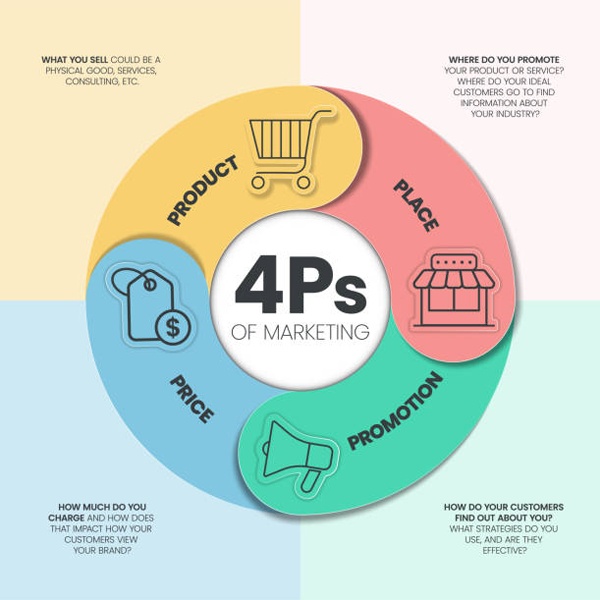
- Product - What You Sell - The product is the clothing or accessory the brand offers. It must look good and feel good. Design, colour, size, fit and quality all matter. Some brands focus on trendy clothes that change often. Others offer classic or handmade items that last longer.
- Price - How Much You Charge - Price is the amount the customer pays. Brands choose between high prices (called skimming) or low prices (called penetration). A high price can make a product look premium. A low price helps reach more people. The price should match the value of the product.
- Place - Where You Sell - Place means where the customer can buy the product. This can be in shops, shopping malls or online. Many fashion brands sell on websites, apps and social media. Being in the right place helps the brand reach the right people.
- Promotion - How You Tell People - Promotion means how the brand tells people about its product. This can be done through fashion shows, ads, social media and by using influencers. Promotion helps people see the product and learn about the brand.
How Clothes are Made - From Start to Finish
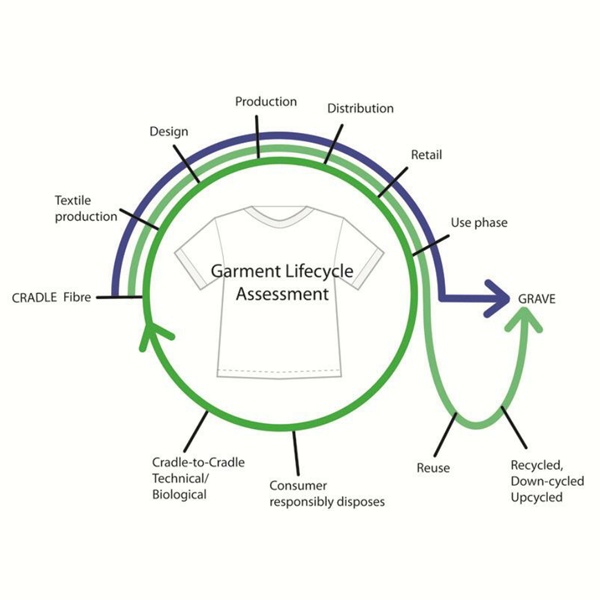
Fashion starts with raw materials. These include cotton from farms, silk from silkworms and synthetic
fibres from factories. The materials are then dyed, printed or woven into fabric. Next, the fabric goes to garment makers. They cut and stitch it into clothes. After that, the clothes are packed, labelled and sent to shops or online stores. This full process - from materials to final product - is called the fashion pipeline. Every step matters. A delay at one point can slow down the whole chain. That's why good planning and timing are important.
Why Italy does it Well?
Italy is known for doing fashion better than many others. This is not just because of design. The real strength lies in how things work behind the scenes. Many factories in Italy are close to each other. This makes it faster to get fabrics, trims and other materials. Fashion schools in Italy also train new designers and workers with the latest skills. The Italian government supports the
fashion industry with funds and global promotion. Because of all this, Italy stays quick, skilled and always ready for what's next.
How the Fashion Value Chain Works
The fashion value chain shows the full journey of a product - from the first idea to the final sale. It is divided into two main parts: upstream and downstream.
Upstream: From Ideas to Production
Upstream includes everything that happens before the product is ready to sell. This covers:
- Research and Design
- Choosing fabrics and materials
- Making samples
- Manufacturing the clothes
In this stage, brands focus on how the product should look, feel and fit. They also decide where and how it will be made. The goal here is to create the final product.
Downstream: From Store to Customer
Downstream starts after the product is made. This part includes:
- Branding and marketing
- Pricing and promotions
- Shipping and delivery
- Selling through shops or online
This stage is all about showing the product to customers and making it available for purchase. Brands use ads, social media and stores to reach people.
Opportunities & Challenges in the Business of Fashion
The fashion business is full of chances, but it also comes with problems. Some things are improving, while others are getting harder. Here's a simple look at what's happening.
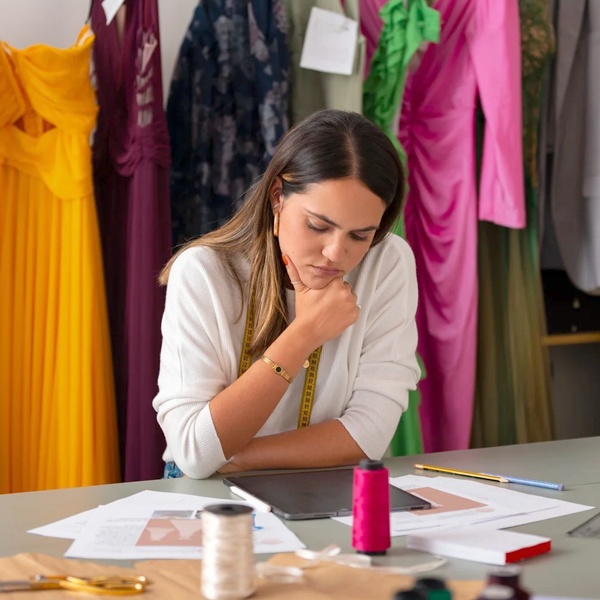
- Moving Towards Sustainability - Many brands are now trying to be more eco-friendly. They are choosing materials that can be reused or recycled. This is called a circular business model. It helps reduce waste and pollution. More people are now asking how their clothes are made. They want safe working conditions and clean production methods. This is good for the planet and for workers. But not all companies find this easy. Small brands find it costly. Bigger brands need to change their systems. Still, the shift towards green fashion is growing fast.
- Technology is Helping Fashion - Technology is now a big part of fashion. Many brands use Artificial Intelligence to design clothes, manage stock and give customers better shopping choices. AI can suggest what to wear. It also helps brands know which styles may sell well. This saves money and time. But using AI is not cheap. Some brands cannot afford it. Others need training to use it well. Still, this is a strong chance for growth.
- Supply Chains are Weak and Buyers Keep Changing - Fashion brands often get their materials and clothes from other countries. But things like transport delays or price changes can affect this badly. One small problem can stop everything. Also, buyers today keep changing what they want. Trends come and go quickly. People are more careful before buying and want more value. Brands that learn fast and listen to their buyers can still do well. But those that stay slow may struggle.
Career Pathways & Industry Roles in Fashion
Fashion is not just about designing clothes. It is also about how those clothes are made, sold and managed. Many important jobs in the
fashion world happen behind the scenes. Let's look at some of them.
- Merchandising - Merchandisers help choose which clothes go into stores. They study fashion trends, plan stock levels and make sure the right items are in the right place at the right time. This job needs both fashion sense and planning skills.
- Sourcing and Supply Chain - Sourcing teams find the materials needed to make clothes, like fabric and buttons. The supply chain team moves the items from factories to stores. They work closely with manufacturers, shipping teams and suppliers. Their job is to keep things running smoothly and on time.
- Marketing - Marketing teams help people know about a fashion brand. They plan ads, social media posts and events. They also work on the look and message of the brand. This role needs creativity and good communication skills.
- Finance - Finance teams look after the money side of fashion. They handle budgets, prices, profits and costs. They also help the brand make smart business choices. This role suits people who are good with numbers and planning.
Simple Tips for Fashion Beginners
If you want to work in fashion, there are a few things you should start doing early. These tips will help you learn faster and grow better in this field.
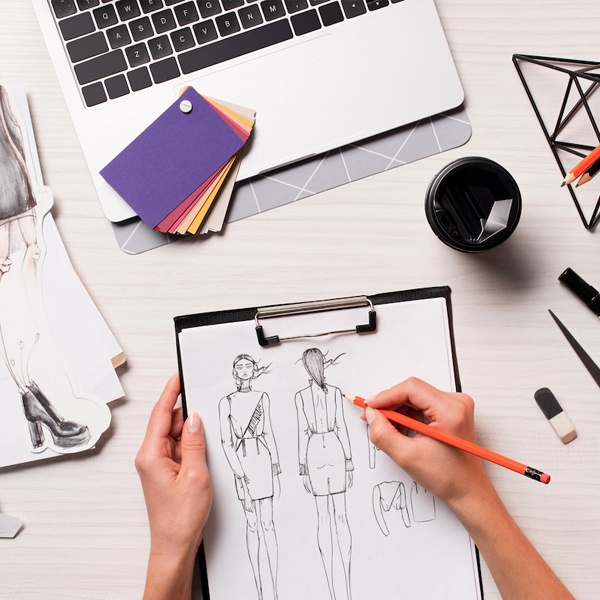
- Keep Learning Every Day - Fashion changes all the time. To stay updated, follow trusted platforms like Business of Fashion (BoF). Watch fashion weeks to see new ideas and styles. You can also listen to short podcasts that talk about fashion business, trends and designers. Just a few minutes a day can teach you a lot.
- Learn Digital Skills - Fashion is not only about clothes. It also uses new tools like AI and online shopping. Try to understand how websites sell clothes. Learn how brands use social media to grow. These skills are important if you want to work with brands or run your own business.
- Try Internships - An internship is a good way to get real work experience. Work in different areas like production, marketing or sales. This will help you learn how fashion companies work. It will also help you meet people who can guide you.
- Keep Practising - No one becomes an expert in a day. Take small steps. Learn from your mistakes. Keep improving your work. Over time, you will get better and more confident.
The
business of fashion is more than just clothes. It's about smart planning, knowing what people want, managing the supply chain well and bringing in new ideas. These things work together to keep fashion moving and growing. But real success comes when creativity and business come together. It's not just about designing nice outfits. It's also about how to make, sell and deliver them in the right way.
If you love fashion, don't stop at the creative part. Learn how the business side works too. When you mix passion with smart thinking, great things can happen. Fashion isn't only about style. It's also about clear planning, smart choices and bold ideas. And when you bring all that together, you are not just part of the fashion world - you are shaping its future.
Frequently Asked Questions about Business of Fashion
1. What does 'Business of Fashion' mean?
It's all about how fashion is planned, made, sold and managed. It covers everything from design to running shops and online stores.
2. Why should fashion students learn about the business side?
Knowing the business helps students turn ideas into real products. It also opens up more
career options like buying, marketing and managing fashion brands.
3. What is a fashion product life cycle?
It shows how a fashion item goes through five stages: start, rise, peak, fall and stop. Brands use this to know when to sell or stop selling a style.
4. How do fashion trends change?
Trends move in a cycle. Some people try new styles early, while others follow later. his helps brands decide when to launch new looks.
5. What is fast fashion?
Fast fashion means making clothes quickly and cheaply. It helps brands bring in new styles often, but it also causes waste and harms the planet.
6. What is the consumer adoption curve?
It's a chart that shows how people accept new trends - from trendsetters to those who follow last. It helps brands choose how and when to market.
They are Product, Price, Place and Promotion. These help brands decide what to sell, at what cost, where to sell it and how to promote it.
8. What is the fashion supply chain?
It's the step-by-step process from making fabric to selling finished clothes in shops or online.
9. What is a value chain in fashion?
It shows the important steps that add value to a product, like design, making, shipping and selling.
10. What is vertical integration?
It means a brand controls many steps - from design to selling - under one roof. It helps keep quality high and things under control.
11. Why do big brands use vertical integration?
It gives them better control over the product, faster service and a stronger brand image.
12. What are fashion clusters or pipelines?
These are places where many fashion businesses and schools work together. Italy is a good example with strong support from the government.
13. How does technology help fashion businesses?
Tech helps with design, virtual try-ons, managing stock and predicting trends using AI and data.
14. What does sustainability mean in fashion?
It means making clothes in ways that are good for people and the planet - like using less water, recycling fabric or paying fair wages.
15. What are the biggest problems in fashion today?
Too much waste, fast-changing trends, climate
issues and supply chain delays are some key challenges.
16. Can fashion be more eco-friendly?
Yes. Brands now reuse clothes, rent items and use organic or recycled fabrics to reduce harm.
17. What jobs can I get in the business of fashion?
You can work in fashion buying, marketing, planning, sourcing or managing stores and online sales.
18. How can I start my own fashion brand?
You will need a good idea, a plan, suppliers, some money and strong branding. A website or social media page helps too.
19. What is BoF (Business of Fashion)?
It's a popular website that shares news, trends and tips about the fashion industry. It's helpful for students and pros alike.
20. How is AI used in fashion?
AI helps brands know what people like, design new looks, manage stock and give shoppers a better online experience.
21. What are some new business trends in fashion?
Trends include renting clothes, reselling, using recycled materials and mixing fashion with sports or tech.
22. How has online shopping changed fashion?
Online stores have made shopping easier. Brands also use social media and apps to talk to customers directly.
23. Which countries lead in fashion business?
The US, UK, France, Italy, China and Japan are top fashion markets. India and Brazil are growing fast too.
24. How are luxury brands different from regular brands?
Luxury brands focus on quality, detail and brand story. Regular brands focus more on price and
speed.
25. How do brands predict fashion trends?
They study what people wear, colours, past styles and data to guess what's next.
26. How do fashion brands set prices?
Prices depend on the cost of making, brand image, what people will pay and the stage of the product cycle.
27. What does omnichannel mean in fashion?
It means you can shop in-store, online or on mobile - and everything works together smoothly.
28. What skills do I need for a fashion business job?
You'll need to understand fashion, plan well, use numbers, know trends and be comfortable with technology.
29. What are D2C fashion brands?
D2C means Direct to Consumer. These brands sell straight to buyers without using shops in between.
30. What is fashion merchandising?
It's the job of picking, planning and showing clothes in stores or websites to boost sales.
31. Why is customer experience important in fashion?
Happy customers come back. Good service, easy shopping and caring about their needs helps build trust and sales.

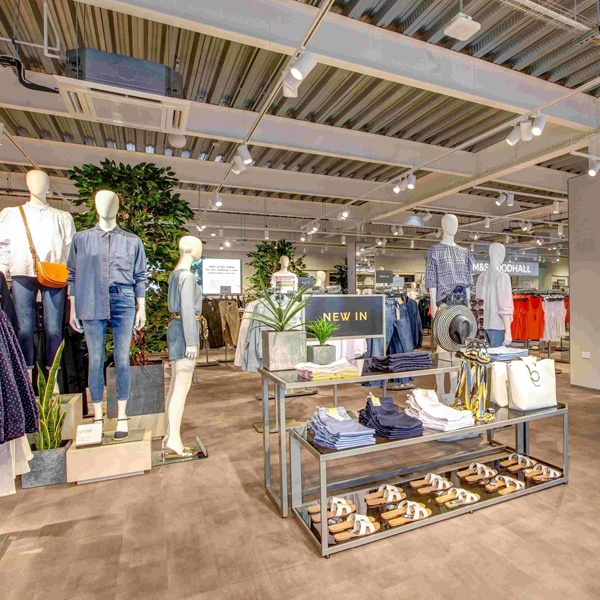









 CONTACT USWaves Institute of Fashion Designing,
CONTACT USWaves Institute of Fashion Designing,